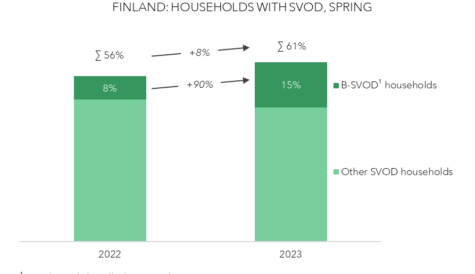
After more than 40 years of operation, DTVE is closing its doors and our website will no longer be updated daily. Thank you for all of your support.
TDG: Quibi ‘must look to free ad-funded model to survive’
 Short-form content platform Quibi’s recent move to reduce fees and introduce an ad-supported tier to its offering in Australia and New Zealand most likely portends a wider shift to a free, ad-supported model, according to The Diffusion Group (TDG).
Short-form content platform Quibi’s recent move to reduce fees and introduce an ad-supported tier to its offering in Australia and New Zealand most likely portends a wider shift to a free, ad-supported model, according to The Diffusion Group (TDG).
According to TDG, an overall lack of excitement at Quibi’s offering combined with the impact of COVID-19, which limits the appeal of a service targeted at mobile devices for customers on the move, means that its current model is unsustainable.
TDG cited an April 2020 survey it carried out in which it asked adult broadband users how likely they would be to sign up for Quibi at US$8 a month ad-free and US$5 a month with ads, and to use if free with ads.
The survey found that demand did not incrementally improve as the cost of service declined. The top two scores on TDG’s system of assessing the results for $8 and $5 a month were 9% and 10% respectively, with the bottom two scores being 63% and 65% respectively.
By comparison, pre-launch research on Disney+ at US$6.99 a month saw top two scores of 43%, with 18% who would definitely sign up.
However, if Quibi’s service were free with ads, four-in-ten adult broadband users would watch, with 18% certain to do so. Another 34% are more likely to equivocate, being either slightly likely or unlikely to view.
TDG argues that younger audiences targeted by Quibie have shown themselves unqilling to pay for short-form content, whatever the features and formats offered.
“It was inevitable that Quibi would make such moves [as the Australian and New Zealand changes].The question is how much longer the company can wait before implementing similar changes in the US, especially as the pandemic extends into the fall and winter,” said Lauren Kozak, senior analyst and author of TDG’s report.
“Social networks dominate short-form video viewing among young adults, capturing hundreds of millions of viewers. Yet none—including YouTube and Facebook—have been able to convince young adults to pay a fee each month to watch professional content. At this point in the evolution of mobile short-form video, and regardless of new features and formats, introducing a paywall is problematic.”


